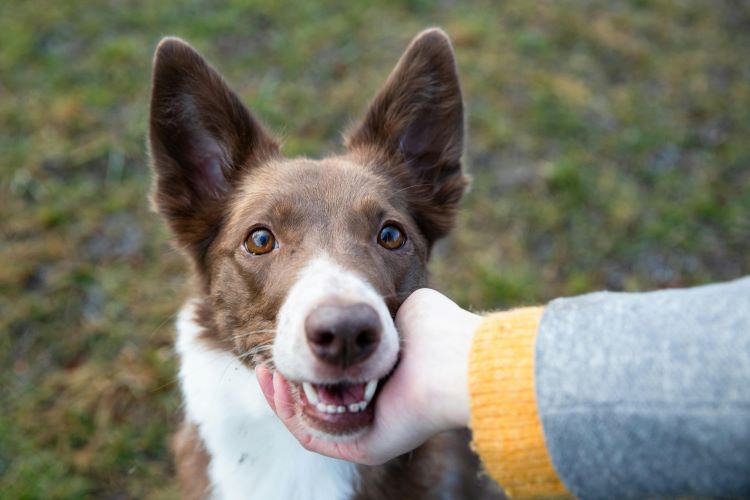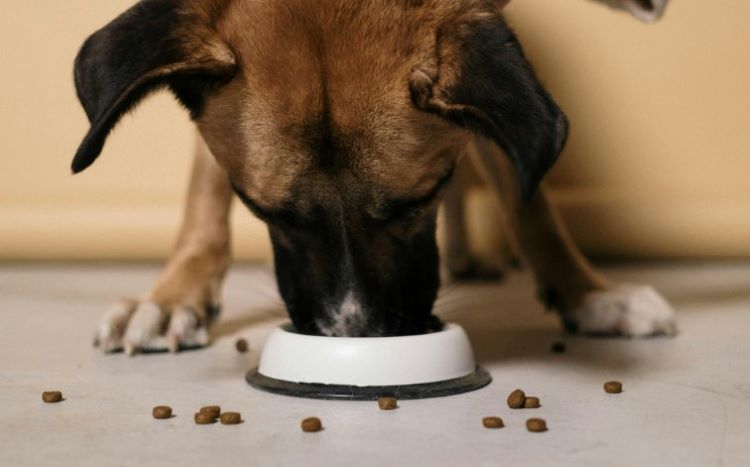Ready to help treat your pet to a healthy life?
How Much Does a Dog Cost? 7 Hidden Costs of Dog Ownership & How to Handle Them
By : Brianna Gunter | Published Jan 28, 2025

Few things bring more joy than having a dog in the family. But amid all the playtime, adventures, and cuddles can arise challenges thanks to unexpected care costs. The plain and simple reality is that having a dog is often more expensive than many dog owners realize. Although pet ownership has jumped up significantly in recent decades, so too have rates of people giving up dogs due to cost.
As one 2024 LendingTree survey of nearly 2,000 North American pet owners found, 12% surrendered at least one pet because they felt they could no longer afford to care for them. Even more telling, almost a quarter (23%) of total pet owners said they’ve considered giving up pets due to costs, while 37% reported having already gone into debt for their pet.
While sad, there are things dog owners can do to help prevent these situations. To start, it’s important for all new and prospective canine owners to learn about the unexpected expenses that can arise over time as a result of having a dog. Here are seven hidden costs of dog ownership and how to prepare for them.
1. Upfront costs
In most cases, bringing a dog into your life isn’t free, and the upfront costs can add up quickly. Adoption fees typically fall anywhere from $50 to $500, depending on the location, age, and dog breed. Adopting from an animal shelter is typically the cheapest option, while getting a pup from a breeder can cost hundreds to even thousands.
And that’s just the start. Other early expenses of adopting a dog may include first veterinary visits (which include initial shots and tests), spaying/neutering, and microchipping. Altogether, you could be looking at spending an additional $200 to $500 or more for these important expenses.
How to manage dog adoption expenses
It’s important to carefully research adoption options beforehand, as some shelters will include more (like initial vaccinations and spaying/neutering) in their adoption fee while others will not. But when it comes to breeders, be wary of adoption prices that seem too good to be true. To help prevent excess veterinary treatment later on due to congenital illnesses and other issues, choose a pet from a professional who breeds animals responsibly, with a priority on health and safety.
2. Dog food
Many dog owners underestimate just how much they will be spending on their pet’s nutritional needs. Dog food costs have increased in recent years, though they vary widely based on the dog’s size, age, dietary needs, and the brand or type of food chosen. On average, standard dog food for a medium-sized dog can cost between $20 and $50 per month. Meanwhile, premium or specialized diets — such as grain-free or high-protein formulas — can cost around $100 or even more monthly. Wet food is generally pricier, often adding $50 to $150 per month for medium to large breeds.
Puppies and dogs with specific health issues likewise require specialized formulas, increasing costs further. Additionally, dog food needs change as they age, which translates to further fluctuations in your budget. Learn what to feed puppies throughout their first year.
Ways to alleviate dog food costs
Unless your veterinarian has specifically pointed out your dog’s weight as a concern, you can’t expect to change how much they eat. Fortunately, there are some other tips you can follow to ease dog food costs:
- Store food properly in airtight containers and temperature controlled environments to avoid waste due to spoilage.
- If available, buy food in bulk to save on per-pound prices, especially for large breeds.
- Look for sales, coupons, or subscription services that offer discounts on regular purchases.
- Choose high-quality, affordable brands that meet nutritional needs without unnecessary extras — just like you, your dog will feel fuller faster and will be healthier overall when eating a nutrient-dense diet designed for their needs.
- Consider making your own dog food. When balanced and approved by a vet, homemade pet meals can be a more cost-effective option.
- Always serve your dog proper portions for their age, stature, and breed.
- Consult your vet for more affordable diet recommendations that still provide essential nutrients.
Don’t have a dog yet but interested in adopting? Smaller dog breeds tend to eat less than large dog breeds — something to keep in mind if food costs are a concern.

3. Basic dog care supplies
Do you have everything you need to give your dog a bath? Probably not, if you’re new to dog parenting. And that’s just one area to check off. You’ll need a plethora of basic dog care items, from food bowls to a leash and dog crate. The cost of all of these items will depend on factors like where you live, what size dog you have, and, of course, the brands you buy from. But generally speaking, you’re looking at spending anywhere between $150 to $400 or even more.
How to save on basic dog care
If you’re new to dog parenting, you may want to ask more experienced friends and family members if they have any dog care supplies in good, clean condition that they’re no longer using. It’s also a good idea to keep an eye out for sales with pet supply retailers, as they often swap out old inventory as newer items come in.
4. Toys and other enrichment items
In addition to meeting your dog’s basic care needs, you’ll also need to provide supplies for their mental enrichment and energy levels. Costs here range widely between dog owners, as it’s largely up to personal preference what kinds of toys and other items you get as well as what kind. There are dog toys and play areas that cost hundreds of dollars or more, while others are as simple as a pack of tennis balls.
Avoid overspending on dog toys
Your dog does need some toys at home, but veterinarians only recommend keeping a couple out at a time and rotating often to help prevent stress and boredom. With this in mind, you don’t need to buy every cute dog toy you see. It’s also key to remember that indoor playtime doesn’t replace daily walks or trips to the dog park.
5. Veterinary care costs
One of the biggest areas of unexpected dog care costs are their healthcare needs. These costs generally fall into two areas:
Routine healthcare
Taking care of your dog’s health includes budgeting for routine vet visits. Whether or not your dog is actively suffering from a health condition, they’ll still need annual check-ups (usually costing between $50 and $250), which can get more expensive if vaccinations are needed. And don’t forget flea, tick, and heartworm meds! These monthly preventatives can add up to an additional $50 to $200 a year.
Routine healthcare for your dog may also include teeth cleanings, blood work, prescription food diets, and anything else your vet might recommend for their regular care.
Unexpected health costs
Even if you follow all the routine health expectations, your dog may still get sick or injured from time to time. These situations can be tough if not impossible to budget for, as they’re unpredictable and may require anything from a quick vet visit to an extended animal hospital stay. Sadly, these can be some of the biggest hidden costs of dog ownership. For dog owners unable to handle treatment expenses, pet forfeiture or even economic euthanasia may be viewed as alternative options.
Save with dog health insurance
Dog insurance is there to help protect against unwelcome surprises with your pet’s health. The right coverage will help with unexpected veterinary expenses like accidents, illnesses, surgeries, diagnostic tests, and more. This helps you avoid hefty out-of-pocket costs during emergencies while enabling your dog to get treatment they need.
6. Incidents
In addition to surprise health issues, your dog may incur other costs you can’t predict. For example, your dog could run after a toy and knock over furniture or electronics in the process, causing additional canine-related expenditures for you. In rare but serious situations, your dog could cause damage to a neighbor’s property or, worse, cause injury to someone else.
Prioritize safety
A good dog insurance plan can help cover accidents that result in injury to your pet. However, it’s not just about preventing unforeseen expenses — it’s about keeping your dog, yourself, and others around you safe. To help prevent incidents, be sure to train and socialize your dog properly. You should also dog-proof your home if you haven’t already.
7. Time spent with your dog
Spending time with your dog is the whole point of having a pet, right? Well, what many dog owners don’t realize upfront is just how much time goes into making sure a canine is healthy and content. While not an outright monetary expense, the hours that go toward your dog each day can have a significant impact on your work schedule, hobbies, and overall lifestyle.
Manage your time for you and your dog
Dogs thrive on routine, and you may benefit from that as well. Establish a schedule for walks, feeding, and playtime, creating time in between for work and other responsibilities. You can make your day more efficient by running errands while out on walks with your pet, like running mail to the post office or shopping at dog-friendly stores in your area. It may take some trial and error, but with practice you’ll feel more in control and like no moment with your pet is a wasted one.

Enjoy learning about canine care and how to become a more informed dog parent? Read about the benefits of pet insurance and how it can help you budget better for your dog’s health.
